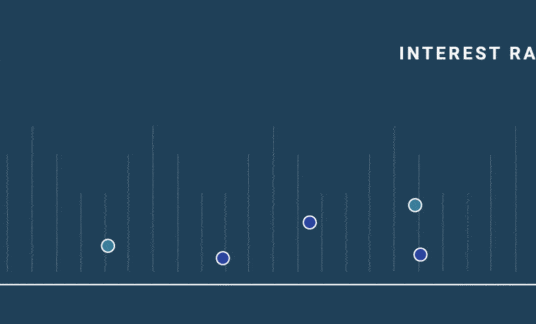TV advertising is a more than $70 billion industry in the U.S.
Want some details on the cost of TV advertising? We’re letting you in on how much local and national ads can cost your business. Also, see what alternative advertising outlets are competing with traditional TV commercials.
How Much Does a TV Commercial Cost?
TV advertising costs vary according to a number of factors, including viewer size, ad frequency, commercial length, broadcasting time and location.
Television ad prices are based on a cost-per-thousand-people viewing a commercial, known as CPM or cost-per-mille. For instance, a network might require a $20 CPM rate to run your 60-second ad, in other words, $20 per thousand viewers.
Keep in mind that the cost for one ad is not the be-all, end-all, as you’ll likely want to run several ads to maximize your reach and ensure the greatest impact.
For instance, while you could run a 60-second ad, consider budgeting your small business advertising costs to run 30- and 15-second TV ads. You could space them out around a local TV program and stay top of mind by featuring the longer ad first, followed by one or more of the shorter ads later on.
A mix of ad lengths can also save you money. Consider investing in less-expensive 10-second promo spots when available too.
-
Sampling of Viewer Demographics by TV Network
TV Network Median Age Median Household Income BBC America 56 $59,500 Bloomberg Television 48 $149,000 CBS Sports Network 49 $88,000 CNBC 57 $160,600 Cooking Channel 51 $68,000 Food Network 47 $70,000 Golf Channel 57 $75,000 History Channel 51 $66,000 MSNBC 54 $67,000 National Geographic 52 $64,000 TBS 44 $68,000 USA 54 $49,900 The Weather Channel 63 $60,700 Source: National Media Spots
What Makes Up TV Advertising Costs?
There are 2 major components to TV ad pricing – production costs and airtime costs. Here are the details of each.
TV Advertising Production Costs
Production costs are what you pay to create a commercial.
If you hire a professional production company to create an ad, it takes the burden off of you to find a team, but you could pay anywhere from $1,000 to $100,000.
Consider all components that go into making a commercial:
- Script
- Actors
- Voiceover
- Video or still images
- Graphic elements (logos, artwork, etc.)
- Audio and video edits
If you don’t have a large budget for a TV ad, you can hire freelancers and coordinate the project on your own. However, freelancers often specialize in one area, so you’ll likely have to hire several people, including an editor or a producer, to assemble the finished ad.
In some cases, the network through which you place an ad will have a production company on staff that can create a TV ad for you. This could be part of a package that includes airtime.
Note that it’s easier to control production costs than airtime fees. For instance, you could keep production costs down to spend more on broadcasting your message.
Remember, however, that you’re competing for people’s attention, and scrimping on production value could impact how your commercial is received.
That said, the most important information to highlight is the who, why and how of your business. In other words, your TV commercial should feature your business name, logo, product or service offering, why people should buy from you and how they can reach you or learn more. And conveying this doesn’t need to cost a fortune.
TV Advertising Airtime Costs
Airtime costs vary widely between markets, and TV advertising can be local, regional or national. Costs are based, in large part, on the number of viewers who see your commercial. Specifically, showing your commercial to fewer viewers makes airtime cheaper, though these are often late-night time slots during weekdays.
According to Statista, the upfront CPM for cable TV was almost $19.50 in the 2019-2020 season, while national broadcast TV advertising was just over $36. Not surprisingly, one of the priciest TV shows to advertise on is Sunday Night Football.
Nationally televised commercials could work well if you run an ecommerce business without a localized brick-and-mortar presence, while using local TV ads to promote your business can expose you to new prospects in your area who may be ready to buy.
-
Calculating Airtime Costs
If you want to know precisely how much airtime costs, ask your local TV ad rep how many people will see your commercial. Let’s assume you want to buy in Kansas City, where the rate is $14.36 CPM and 100,000 people will see your ad.
Here’s how you’ll figure out the total cost of airtime:
(100,000/1,000) x $14.36=$1,436
The total airtime for your commercial would be $1,436.
How Much Does a 30-Second Commercial Cost?
A 30-second commercial run during an off-peak, local time slot on a local station could cost less than $100 for a viewership of several thousand. That said, budgeting for a couple hundred to a thousand dollars for a 30-second ad is more realistic for local TV.
In contrast, a 30-second commercial on national TV could cost several hundred thousand dollars. In fact, according to Statista, the average was $104,700 in 2019, while during the 2019-2020 season, a 30-second TV ad on Sunday Night Football had a cost of roughly $712,000.
Let’s not forget Superbowl Sunday, when a half-minute commercial can cost millions.
Tips to Reduce TV Advertising Costs
Hesitant about investing in television commercials because of the costs? The following tips will help you reduce expenses when buying airtime or creative resources to put your commercial together.
How to Control Television Production Costs
- Use freelancer platforms: Sites such as ProductionHUB can provide contact with creative pros who can write, edit and produce your commercial at lower costs than you’d likely find with a media agency.
- Buy individual commercial elements: Use a freelancer to put together creative elements you pre-purchase, including stock footage, music, graphic elements and more. Search through marketplaces such as VideoHive and Shutterstock to find what you need.
How to Control Television Airtime Costs
- Advertise more than once: The more weeks you buy, the lower your cost per showing. Plus, the more times you run an ad, the more views you’ll likely get.
- Lower your expectations: Be flexible with times, stations and days of the week.
- Play with fire: If you can find a fire sale, you’ll have to purchase airtime in advance, but you’ll get a better deal.
TV Advertising: Is It Worth the Cost?
Passive video advertising is the easiest way to get prospects to pay attention. With careful planning and practice, you could see your bottom line soar. Just be sure to keep these pros and cons in mind when evaluating how much to spend on TV ad costs.
Pros of TV Commercials
Engages Multiple Senses
Unlike print advertising, TV commercials engage visual and auditory senses. If you can grab a viewer’s attention, you’ll have a higher chance of keeping them watching and listening. Persuade them to try your product by delighting them via sight and sound.
Large Audience Reach
How many TVs do you have in your home? You likely have at least 1. If you have a family, you might have 3 or more. Now think about how many people with TVs have a job and an income. Once you understand your customer demographic, you can target and reach audiences with the means to spend.
Cons of TV Commercials
Difficult to Make Changes
Because of the production elements involved in developing a TV ad, it can be difficult to edit things once post-production has been complete. After all, think about all of the players who came together to help you create the finished product – scriptwriters, actors, graphic designers and video editors, to name a few.
Can Be Costly
Along the same lines, if you do need to make changes, it will likely be costly. That’s not to mention the initial costs involved to produce, air and re-air your TV commercial.
Alternatives to TV Commercials
Is the cost of television ads out of the question? Here are a few alternatives that may be better for your budget.
Streaming Service Commercials (OTT/CTV Advertising)
Consider advertising with streaming TV providers like Hulu and Sling, referred to as over-the-top (OTT) services. In fact, Hulu now has a self-service advertising platform in beta for small business owners.
In addition to OTT, streaming service advertising also includes CTV (Connected TV), referring to devices used to watch online content (e.g., smart TVs, video game consoles).
OTT and CTV allow for easier audience targeting, and local OTT advertising is expected to continue to grow in the coming year.
As with television advertising, more popular networks like Hulu and Sling will be costlier. But you could find lower-priced advertising on other streaming services that don’t have as much name recognition, such as Crackle, PlutoTV, IMDb and FuboTV.
Social Media Advertising
The 6-second “bumper” ad before and after YouTube videos is a great way to warm-up to doing longer spots on cable or national television.
Instagram’s IGTV platform is another option to promote your brand.
Facebook advertising and Google Ads are other viable marketing outlets used by many small business owners.
Online Versions of Print Publications
Another place to promote commercials or ads is on major magazine websites. Check out their media kits to find video prices. Inc.com, for example, charges $240 net CPM for targeted channel video ads.
Radio Advertising
Also consider advertising on traditional and streaming radio platforms. In addition to AM or FM radio, you can look to popular digital music providers, such as Spotify, Pandora and iHeartRadio.












